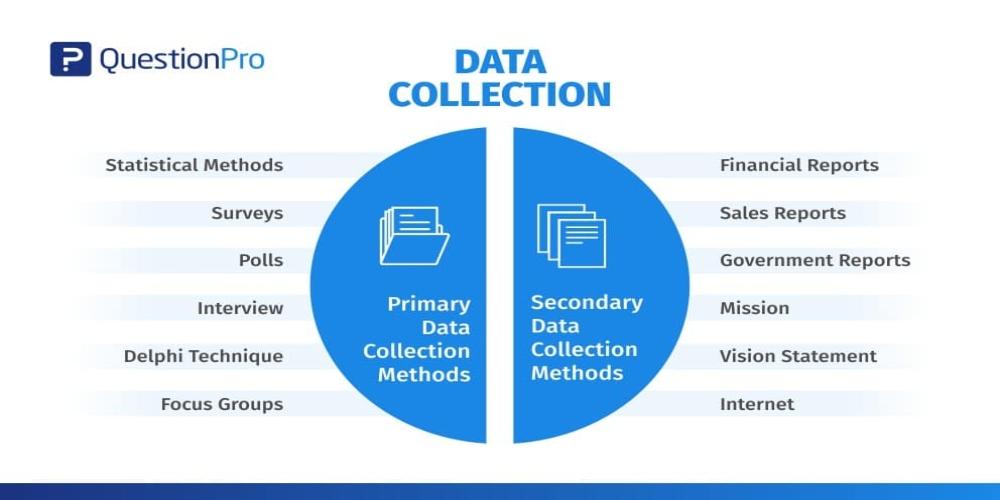Information
Data Collection: What it Is & Methods with Examples

Data collection is a process of collecting data for research, strategic planning, decision planning, and many more. It’s also a vital part of data analytics research projects and applications. Proper data collection offers information required to answer queries, analyze business performance, etc.
With the data collection methods, you can also predict the scenarios, actions, and future trends. Once you know What is data collection, you will learn that data is collected on numerous levels. This is especially true for all the businesses out there. The IT systems collect data regularly on sales, employees, customers, and many more.
They do so when all the transactions are processed, and the data is provided. Organizations also track down social media and conduct surveys to obtain customer feedback. Data analysts and business users collect all the data and then analyze them through the internal systems. The external data sources are only utilized when needed.
Table of Contents
Things you should know about Primary Data
Primary data is new in the data collection realm. It’s untouched, unpublished, and unaltered by the oily fingers of interpretation. It’s much more authentic, reliable, objective, and valid when compared with secondary data.
But primary data is a challenge to come by. It requires a lot more investment in resources, concentration, and time. Small businesses might not need to be in the position to call in private investigators or scientists.
But don’t feel discouraged. You can easily collect primary data from the internet. There are many online forms available, and they are also pretty easy to set up. It will also not cost you many funds and doesn’t take too much time.
Various methods of Data Collection
Now that you know what data collection is, you need to learn about the various methods. According to the type of data you wish to collect, you need to find the best data collection form. You must ensure that the form or method of data collection you choose should be beneficial for your research. Here are some of the best data collection methods:
- Experimental Method: This is a quantitative method
- Ethnographies, Focus Groups, and Interviews: These are qualitative methods
- Archival Research, Surveys, Secondary Data Collection, and Observations: These can be either quantitative or qualitative methods.
But make sure you go for a method that will help you collect data and provide the answer you need. To help you have a good understanding of these methods, here is a table:
| THE METHODS | WHEN TO USE IT | HOW TO COLLECT DATA |
| Experiment | To test out a causal relationship. | Manipulate all the variables and then measure their effects on others. |
| Survey | To understand the opinions or general characteristics of a group of individuals. | Distribute a list of questions over the phone, in person, or to a sample online. |
| Focus Groups/Interviews | To obtain an in-depth understanding of the opinions and perceptions of a topic. | Verbally ask all the participants questions in focus group discussions or individual intervals. |
| Observations | To understand a thing in its natural environment | Survey or measure a sample without trying to affect them |
| Ethnography | To study the culture of an organization or community. | Participate and join a community and record all your reflections and observations. |
| Archival Research | To understand historical or current events, practices, or conditions. | Access to the records, documents, and manuscripts from the internet, libraries, and depositories |
| Secondary Data Collection | To analyze the data from populations you cannot access, | Look for all the datasets that have been collected already by research organizations or government agencies. |
You can use both qualitative and quantitative data collection methods for your research. But before you do anything, it’s important to gain knowledge on data collection.
Challenges you might experience in Data Collection
Even though you can use all types of methods for data collection, at times, you experience some challenges. So, what are these challenges? Let’s find out.
1. Data quality problems
Regarding raw data, it contains inconsistencies, errors, and various other problems. The data-collecting measures are designed to minimize or prevent all these issues. But this is not that foolproof in some cases. Besides that, collected data should go through data profiling to detect all issues. After that, data cleansing helps in fixing all those problems.
2. Finding all the relevant data
Since there is a diverse range of systems that are utilized for navigating and collecting data. But analyzing all these data can be complex work for all the data scientists and other experts. Using data curation methods can make things easier for you to access and find data. For instance, it might contain searchable indexes and develop a data catalog.
3. Deciding the type of data to collect
Under data collection might solve a primary problem for the users who collect data for analytics applications. It can also be an issue for the upfront gathering of raw data. Collecting data, which is not required, can add complexity, cost, and time to the whole process. But leaving out all the helpful data can restrict a data set’s business value and affect the analytics outcome.
- Dealing with Big Data
The big data settings contain a mixture of semi-structured, unstructured, and structured data in massive volumes. It makes the entire data processing and collecting stages much more complicated. Data scientists have to filter all the raw data sets in the data lake for analytics applications.
5. Low response & other research problems
In research studies, a lack of willing participants or responses can raise questions about the validity of the collected data. There are several other research challenges, such as:
- Developing enough assurance methods to ensure the data is accurate
- Training individuals to collect data
It’s time to elucidate your data
Data collection has become extremely crucial in today’s digital world. But by going through this post, data collection will no longer be a mystery. Having proper knowledge will help you navigate through the endless tides of information. By utilizing all the correct tools, you can optimize the research efforts. This will allow you to hone in on the data, which makes the difference.
Also, Read This: 5 Reasons You Need To Switch To Mobile Form Apps For Data Collection

-

 Business4 years ago
Business4 years agoHow to Do Long-Distance Moves with Children
-

 Business2 years ago
Business2 years agoThe Ultimate Guide To Thriving In Your Printing Franchise
-

 Business2 years ago
Business2 years agoExploring The Benefits And Challenges Of Restaurant Franchising
-

 Tech4 years ago
Tech4 years agoCyber Table That Will Change Your Life
-

 Business5 years ago
Business5 years agoIs Guest Posting a Good Inbound Marketing Strategy?
-

 Lifestyle2 years ago
Lifestyle2 years agoDallas’ Hidden Gems: 6 Must-Try Restaurants Off The Beaten Path!
-

 Lifestyle2 years ago
Lifestyle2 years agoTop 10 Restaurant Franchises In The US
-

 Business2 years ago
Business2 years agoTop 10 Reasons You Should Invest In A Coworking Franchise













Recent Comments